Persian carpets continue to reign supreme in the rug world. These are the best sports vehicles in the rug business, and they often cost a lot of money. There are several explanations for why these area rugs are so expensive.
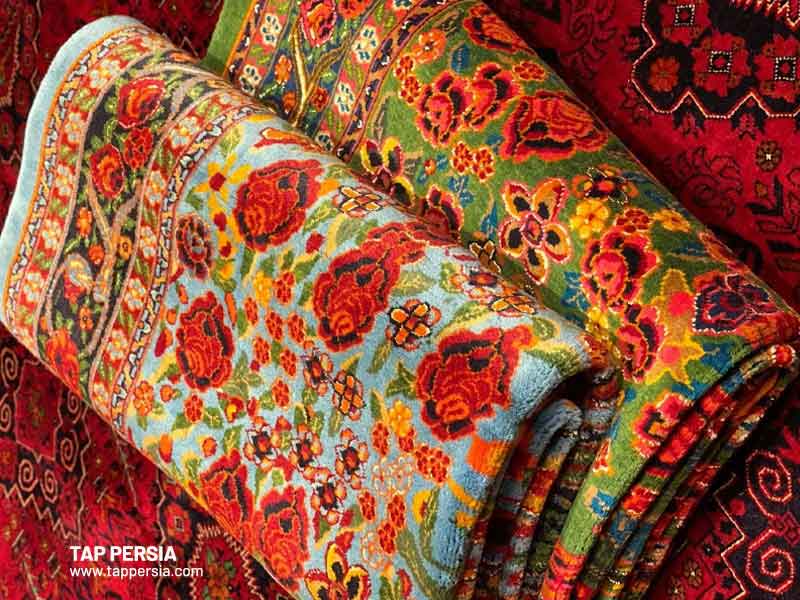
Few people have a Persian rug as a family heirloom that they may have accumulated over several generations. Others are passionate about Persian rugs. The exorbitant price of genuine and expensive Persian rugs is frequently where some future authorities hit their first roadblock. What accounts for the expensive Persian rugs carry over contemporary carpets?
if you are interested in types of Persian rugs, check out this article.
Why Did People Need Rugs, to Begin With?
The local nomadic tribespeople’s flooring, they were first weaved more than 2,500 years ago. Village rug weavers made the earliest Persian carpet in Persia. The populace as functional furniture would use them as current furniture had not yet been developed. The tribes back then had a little issue making carpets due to their enormous sheep herds. They obtained their wool from there and utilized it to make carpets for both themselves and others.
The original Persian carpet weavers made beds, chairs, and tables out of the rugs for their own use in their homes. These early weavers of rugs created the original technique and abilities and passed them on to later weavers.
Why Do Persian Rugs Cost So Much?
We attempted to clarify the plethora of answers that may be given to this topic.
Here are a few explanations for expensive Persian rugs and why they are priced this way:
1.Intricate Structures and Designs
Persian carpets are hand-knotted using tens of thousands of tiny knots. The majority of Persian motifs are curved, and weaving curved shapes properly are said to be much harder than weaving plain geometric patterns.
One of the specialties that a pair may master is knotwork. It can be challenging to make knots appear thick and lush while yet maintaining the pattern. Buying a rug from a skilled weaver, who can charge more, entails receiving a more great rug since the more knots the weaver can fit into each square inch, the clearer and more beautiful the image will be.
2.Creative & Artistic Value
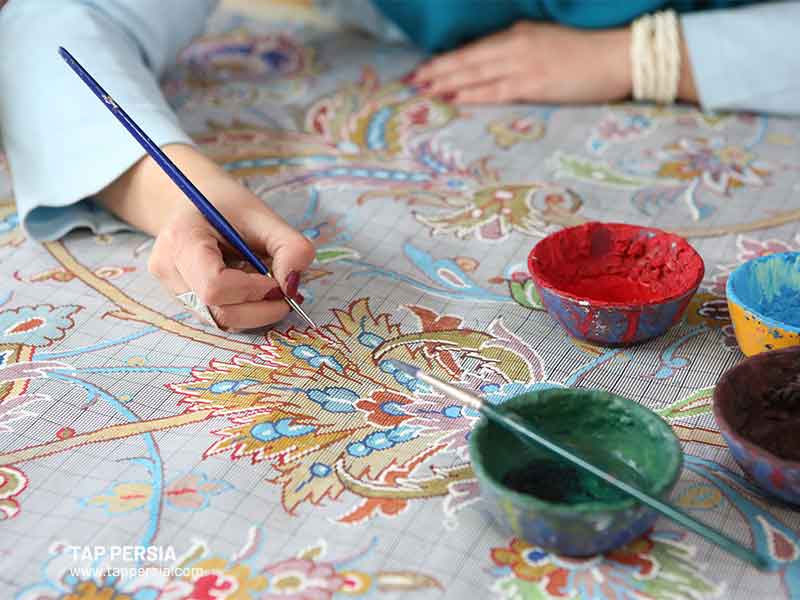
More than 2,500 years have passed since the invention of Persian rugs. These rugs have evolved over time into a kind of art that depicts Persian history and culture. Since all genuine and expensive Persian rugs are hand-woven, each is a one-of-a-kind piece of art made by a talented craftsperson using motifs and themes that reflect their particular culture.
Many of the designs are curved, making routine, mass-produced machine weaving on a straight loom inappropriate for them. The pattern appears more vividly and distinctively as the knots become thicker and smaller, providing the buyer with a one-of-a-kind piece of home décor. The weaver spends hours, one at a time, manually tying each knot to achieve this. The price of the rug rises as a result.
3.The Rugs’ Age
The most expensive Persian rugs ever created are antiques that have been passed down through families for generations. Due to the fact that these items are regarded as works of fine art, the value of a well-kept Persian area rug multiplies since rug aficionados and authorities on workmanship appreciate them highly.
4.Expertly Knotted
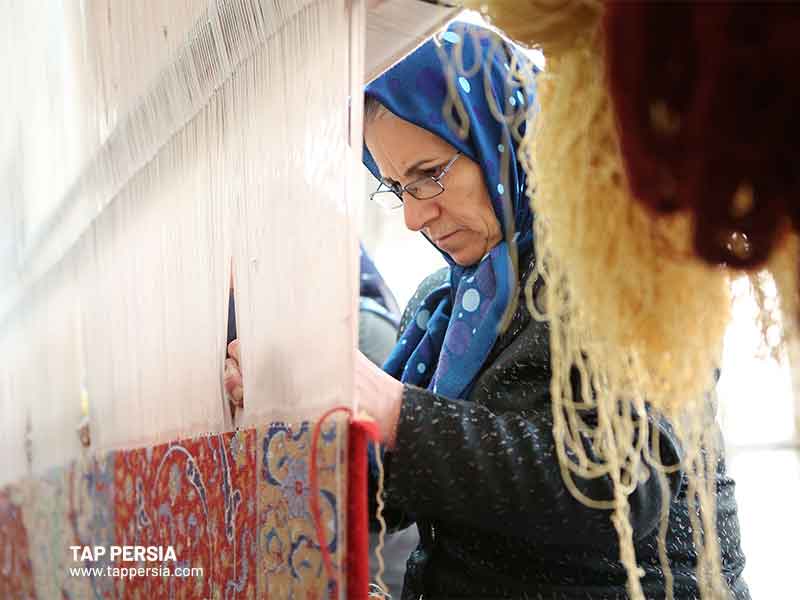
The knotting method used to weave a Persian rug requires talent. These artisans must complete extensive apprenticeship programs before they may become experts in their trade. The pattern may become more intricate the more tightly and densely the knots can be packed into a given square inch. Since every genuine Persian rug has to be created by hand, the maker deserves to be paid accordingly.
5.Superior Materials
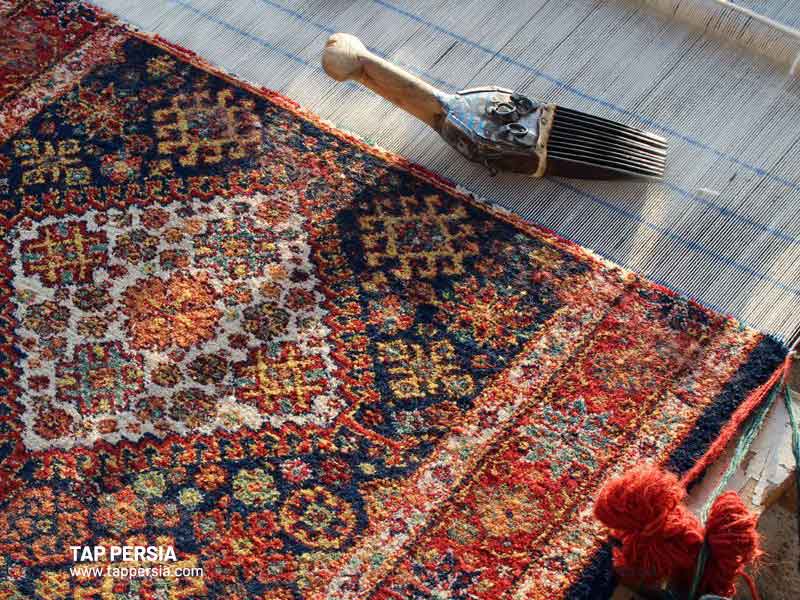
The type of materials used is another reason why Persian area rugs may be so expensive. Silk, fleece, cotton, jute, and sisal are just a few examples of the typical plant or animal fibers that are frequently used to make expensive Persian rugs. These fibers often improve the air quality in the room, last longer than synthetic fibers, are easier to keep clean, don’t typically fade, and are more durable. In fact, it has been suggested that man-made materials like nylon, acrylic, and goo have an adverse effect on allergies.
Every Persian rug will be a one-of-a-kind creation since natural fibers cannot be regulated in the same way that artificial fibers can. Due to the inherent shading inaccuracies of natural fiber, no two carpets can be perfectly distinct from one another.
6.Area of Production
Where your rug comes from is equally important to its production and price as its place of origin. The production of Persian carpets is limited since they can only be created in a few places scattered around the Persian area. Although they could be available for a fraction of the price, similar-looking carpets are not genuine Persian rugs. They would surely be produced in various Asian regions. Selectiveness is a price that comes with Persian rugs.
These are just a few of the many factors that go into determining how much a Persian rug costs. What’s important to understand is that the expense is completely justified when you take into account that you may carry it down through the years and that it will continue to appreciate in value.
4 Types of the Most Expensive Carpets in Iran
Regardless of their age, a lot of Persian and Oriental carpets are typically affordable for collectors. However, there are those that are so unique and priceless that only extremely affluent rug collectors would ever contemplate acquiring such a masterpiece. Today, we take a closer look at some of the most expensive Persian rugs to ever hit the market, each of which has a beauty and past that are still unmatched in the history of rug weaving.
1.Isfahan Silk Carpet
Isfahan, the former Safavid-era capital of Persia (1501-1736), is situated in the middle part of Iran. This beautiful city is located at the base of the Zagros mountains with the desert to the right. Isfahan, which is sometimes cited as the most opulent and stunning city in the whole nation, is also home to some of the best master weavers in the nation.
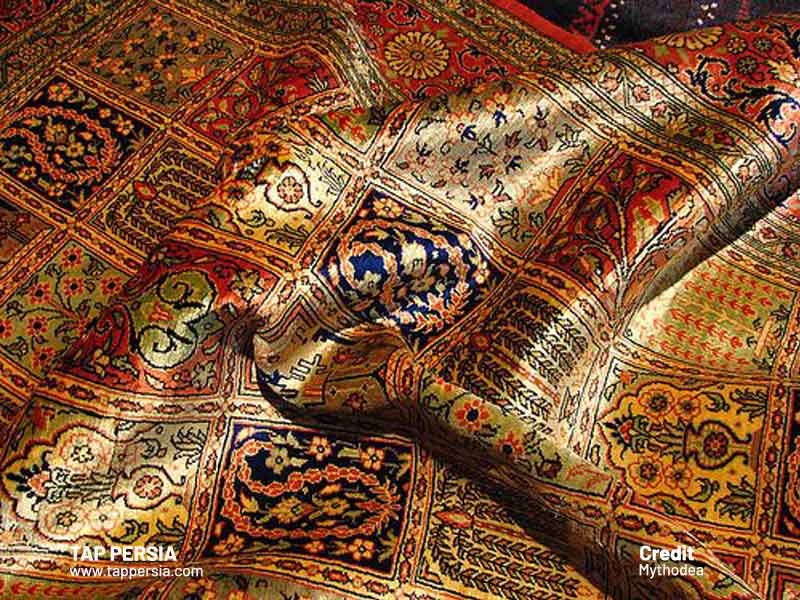
Some of the most magnificent specimens of Persian carpet craftsmanship are made in Isfahan. Numerous globally renowned workshops may be found in and around the city, including Haghighi, Enteshar, Davari and Seirafian. The city’s peak in carpet manufacture, which included carpets created just for nobles and elites, occurred during the Safavid era, especially during Shah Abbas’ leadership (1587-1629).
Under the administration of the mighty Shah Abbas, there was a renaissance in art across Persia, centered on the city of Isfahan. Shah Abbas had a deep appreciation for both art and architecture. The city is still renowned across the world for its magnificent architecture, regal palaces like the Ali Qapo Palace, breathtaking mosques like the Emam mosque, which many consider the best in the nation, as well as other exquisite artwork.
The carpets from Isfahan are said to be among the best and most intricate of all expensive Persian rugs. The carpets are created with fine wool and silk and have finely detailed patterns. They can have a knot density of 650,000 knots per square meter or more, which sets them apart. They are superb pieces of craftsmanship that can only be produced by the most brilliant and experienced weavers.
To make the design stand out more, Isfahan carpets are very delicately knotted and cut fairly short. Silk is used to highlight certain characteristics, such floral designs, and either silk or cotton can be used for the warp. As quality indicators, Isfahan carpets generally include “khefts” on the bottom of the fringes. Over a distance of 1 meter, there are between 7 and 16 distinct colored warp threads visible at equal intervals. The finer and greater the knot density of the carpet, the more threads it contains.
2.Mohtashem Kashan Carpet
One of the most significant urban and expensive Persian rugs produced during the Golden Age of Persian Weaving during the 16th and early 17th century under the famed patron of the arts Shah Abbas are the Kashan carpets. Here is where many classic Persian carpet patterns got their start.
The “Royal Garden” of Kashan, the inspiration for one famous garden pattern, has been kept well since the 16th century and still has spring water flowing through it. This royal garden was constructed by the aforementioned Shah Abbas, the Safavid Dynasty’s king. The great bulk of the highly sought-after 19th and early 20th century Kashan carpets that are now for sale date from this time period. The greatest Kashan carpets were made during this time for specific residences, while others were created for either the domestic or international markets.
The “Mohtashem Kashan” carpets, which were woven up to the end of the 19th century, are the rarest type of Kashan rugs that make use of unconventional patterns and color schemes. Lamb’s wool is used in this premium class of Kashan carpets, giving the surface a highly reflective quality. True Mohtasham Kashan ancient carpets are extremely rare and have exceptionally beautiful knotting.
Either a lovely teardrop medallion or incredibly detailed blossom and leaf vintage rug designs are used. The older Mohtashem Kashan carpets from this style, which date from the middle of the 19th century and occasionally even before, are the most treasured of them. The greatest of these Persian carpets include an ancient white or gold backdrop, reflect incredibly fine detail, and have pastel and earth tones that have been remarkably aged and softened. Large-age Mohtasham Kashan antique carpets are usually kept in private collections.
The greatest Kashan carpets from the 19th and 20th centuries, whether they are in the Classical or the Mohtashem style, are unquestionably formal, highly continental, and go perfectly with classic furnishings.
3.Tabriz Carpets
The Safavid dynasty’s first capital was the ancient city of Tabriz, which is currently Iran’s sixth most populated city. The capital of East Azerbaijan province, located 600 km west of Tehran, can lay claim to having been a major hub for carpet manufacturing for longer than any other city in the nation. The carpets that are currently being knotted in Tabriz employ some of the finest technical standards in existence. In the past, Tabriz was known as a city of expert weavers.
The pattern variety of Tabriz carpets and rugs is one of the most extensive and varied, and carpets with both traditional medallion designs and magnificent allover designs may be found in any color scheme conceivable, from colorful to pastel. The color palette is as varied as the designs. The designs imaginatively reflect pictures of Persian farmers during the many seasons of Spring, Summer, Autumn, and Winter and are occasionally influenced by natural elements.
Sometimes, Persian poetry extracts, such as those from “Saadi,” and other philosophical interpretations are woven into Tabriz carpets with images of palaces and ruins, famous poets, or both. In the truest sense of the term, it may be stated that Tabriz carpets convey their own unique stories.
A extremely fine, high-quality wool is used to create Tabriz carpets, allowing for more detail. Even the most basic Persian carpets have a knot density of over 400,000 knots per square meter, which is far more than the average for many other Persian carpet and rug kinds. These rugs have an astounding amount of detail, some of which are occasionally highlighted with silk to give shine and nearly bring these expensive Persian rugs to life. The term “Raj,” which describes the number of knots in a 7 cm span, is used only to describe the quality of Tabriz carpets. With Raj, the carpet’s quality and density of the knots both improve.
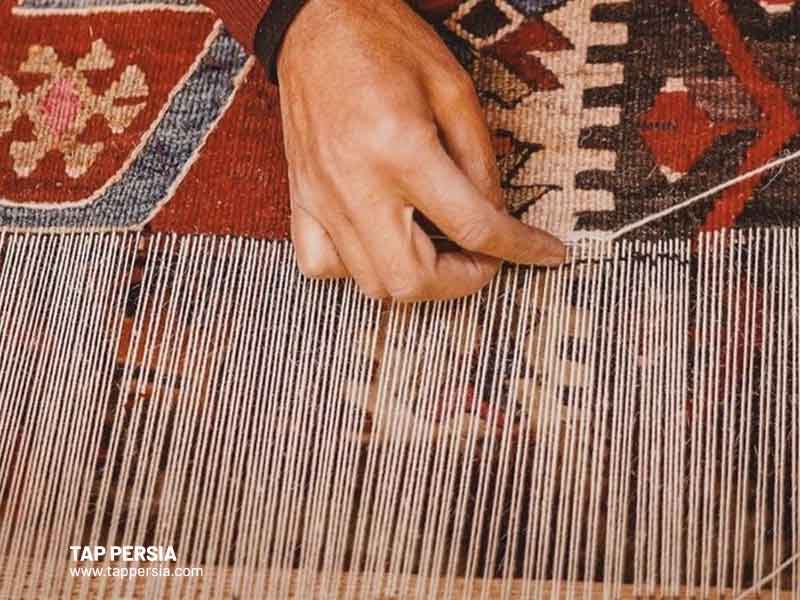
4.Kerman Carpets
In the Dasht-e-Lut desert, 1000 miles south of Tehran, in South Eastern Iran, is the city of Kerman. In contrast to other sections of Persia, Kerman was able to grow with relatively little interference and incursions from the outside world due to its distant and isolated geographical location, making it one of the primary carpet-producing regions of Iran. As a result, Kerman weavers were free to hone their carpet-weaving techniques, which allowed for the development of their creative inventiveness.
The region had unmatched color and dying abilities, and dyers in Kerman were renowned for creating delicate and subtle light color colors that were unique to the region. Typical Kerman carpets have rich, classic red and blue backgrounds that are exquisitely embellished with more delicate, detailed floral, vase-like, and curved patterns. Kerman is known for its dense flowery borders, vases with large palmettes, and carpets with center medallions and lavishly embroidered fields of flowers.
Despite the fact that the quality of modern carpets is regrettably not as great as it once was, the carpets are still regarded as some of the most sophisticated and expensive Persian rugs and carpets. To satisfy the expanding American market need, lesser quality carpets with larger piles, simpler designs, and fewer color options were produced more often in the 1920s. The market has recently seen a return of traditional Safavid designs and carpets of greater quality and knot density, with more varied color variation. This trend has now slowly started to change.
$33 Million Dollar Rug from Sotheby’s: A Record-Breaking Pricey Rug
The most expensive rug ever sold was the “17th Century Antique Persian Carpet” from Sotheby’s, which fetched $33 million.
All eyes were on the auction at Sotheby’s New York, which broke all records and sold the most expensive rug ever. Even as one of the rarest handmade rug masterpieces, it was estimated to fetch over $10 million, but the unidentified buyer was unable to part with it for practically any sum. Given the rug’s connections to Islamic history, it is assumed that the buyer is from the Middle East and that it was presumably purchased for a museum there.
Are Expensive Persian Rugs Worth it?
What truly makes Persian carpets worth the price tag, despite their magnificent designs, colors, and ability to give class to any area, is the craftsmanship and effort it takes to manufacture one. And it is because of this talent that expensive Persian rugs are both attractive things and valuable investments. Your genuine Persian rug may increase in value over time if you take good care of it.
These are only a handful of the numerous aspects that contribute to Persian rugs’ high cost and high value. The fact that Persian carpets require time and talent to weave is the most crucial thing to remember.
Are Persian Rugs Expensive in Iran?
Industry insiders point out that Iranian handmade carpets are substantially more expensive than those created in other nations, which reduces their ability to compete in the global market.
What is the Oldest Persian Rug?
The Pazyryk rug, which is about 2400 years old and from the fourth century B.C., is the oldest Oriental rug that has ever been discovered.
Which Country has the Best Rug in the World?
Nobody creates high-quality, hand-made carpets better than the Iranians.
How long do Persian Rugs Last?
A real Persian rug may survive more than 100 years with proper care and upkeep, and even 200 years in the case of ancient Persian carpets.
Where are the Best Persian Rugs Made?
Isfahan, in Iran, is known for its very exquisite and high-quality Persian carpets, which are crafted there by expert knotters.



Comment (0)